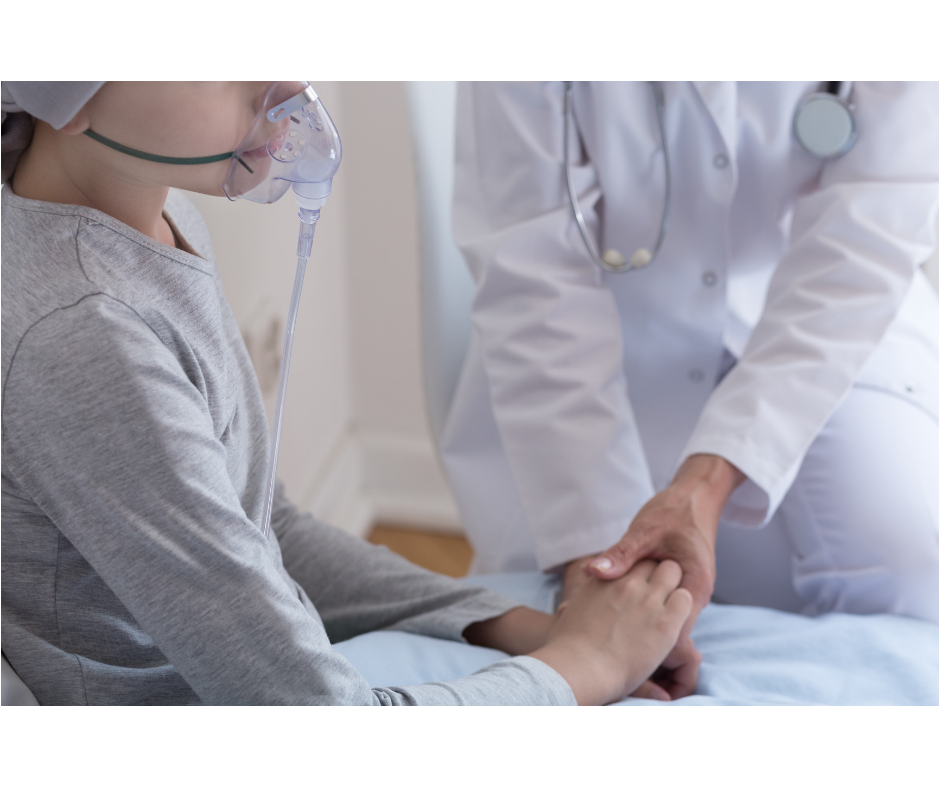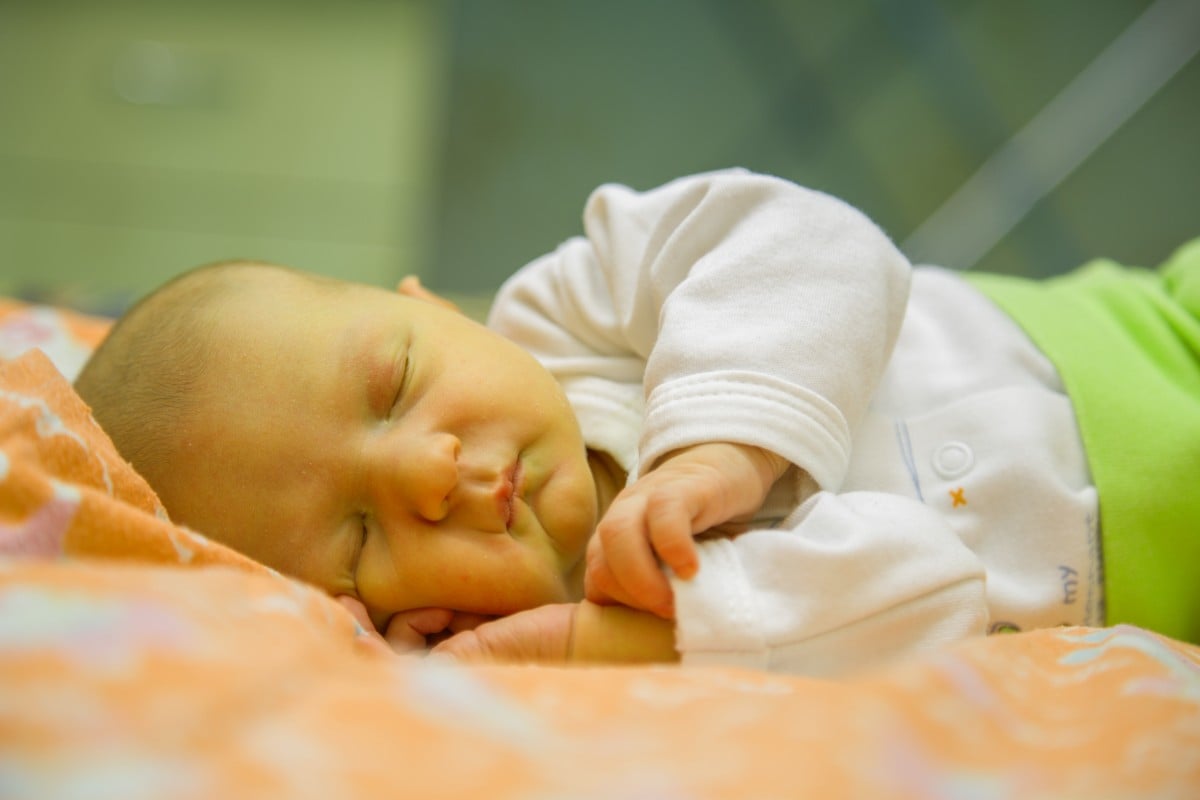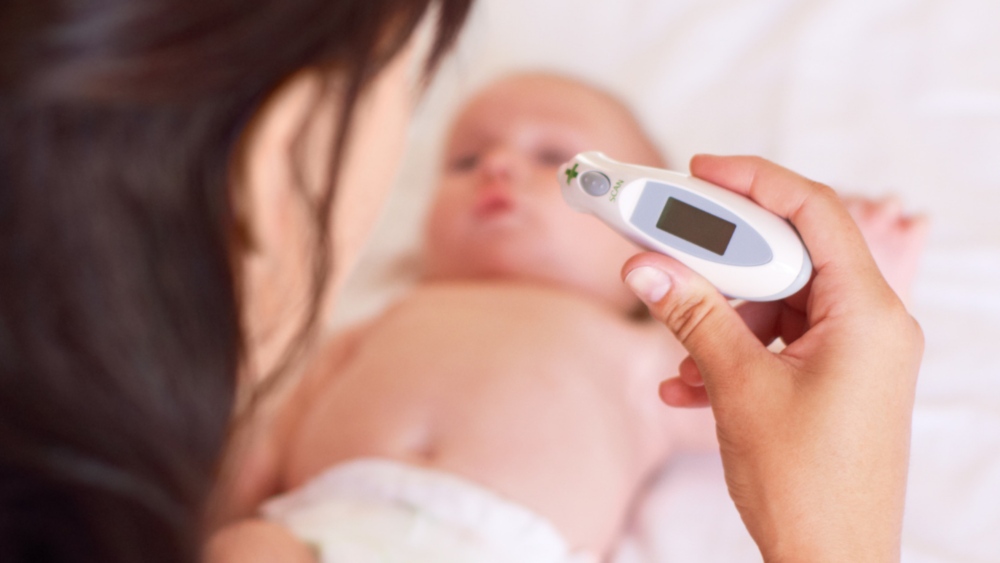Pediatric Rheumatology
Overview
The division of Pediatric Rheumatology helps every child suffering from any disorder related to the immune system (including all autoimmune and autoinflammatory conditions) and primary immune deficiencies. Primary immune deficiencies can be seen as
- recurrent and or periodic fevers ( those that return every 2-3 weeks)
- rash
- recurrent pain in abdomen
- joint pains and swelling , difficulty in walking
- redness of eyes
- muscle weakness
- low immunity
- kidney involvement
We strive to provide comprehensive care for all rheumatological or auto-immune, auto-inflammatory and immuno-deficient conditions such as
- Juvenile Idiopathic Arthritis
- Systemic Lupus Erythematosus and other connective tissue disorders,
- Juvenile Dermatomyositis
- Autoinflammatory Syndromes
- Primary Immunodeficiencies and other rheumatological disorders
What is Pediatric Rheumatology?
Pediatric Rheumatology is the study of diseases of the immune system which involves all autoimmune, auto-inflammatory and primary immuno-deficiencies in children. Usually the immune system helps us to fight infections. In autoimmune diseases, however, the immune system reacts in a different way and becomes overactive in normal tissue. This reaction of the immune system leads to inflammation causing swelling in the tissues eventually leading to possible tissue damage.
A Pediatric Rheumatologist assesses and treats children with immune defects, painful and swollen joints and back pain.
When Should You See a Pediatric Rheumatologist?
If you notice
- painful joints
- difficulty in walking
- limping, backaches
- recurrent or periodic fevers
- recurrent stomach-aches
- recurrent breathing difficulties
- rash
- recurrent sore throats
- redness of eyes
- or low immunity in your child, you should consult a pediatric rheumatologist.
The Pediatric Rheumatology department at Sitaram Bhartia provides comprehensive consultation, evaluation, diagnosis and management of complex rheumatological conditions.
Conditions Treated-
- Juvenile Idiopathic Arthritis
- Systemic Lupus Erythematosus
- Mixed Connective Tissue Disorder
- Sjogren’s Syndrome
- Juvenile Dermatomyositis
- Juvenile Polymyositis
- Sarcoidosis
- Henoch Schoenleine Purpura
- Kawasaki Disease
- Takayasu Disease
- ANCA associated Vasculitis
- Gait Disorders
- Musculoskeletal pains
- Periodic Fever
- Familial Mediterranean Fever
- Tumor necrosis Factor associated periodic Syndrome
- Cryopyrin associated periodic syndromes
- Periodic Fever, aphthous ulcers adenitis syndrome.
- Immunodeficiencies
- Autoimmune Encephalitis
- Central Nervous system vasculitis
- Bechet’s Disease
- Poly arthritis Nodosa
- Autoinflammatory Bone Disease -CRMO
- Pain Amplification syndromes
- Idiopathic musculoskeletal pain
- Raynaud’s Phenomena
- Scleroderma
- Systemic Sclerosis
- Uveitis
- Idiopathic Musculoskeletal Pain Syndromes
- Patello Femoral Syndrome -Knee pain
- Benign Hyper mobility Syndrome
- Transient Synovitis.
- Fibromyalgia Syndrome,
- Erythromelalgia
- Slipped Capital Femoral Epiphysis
- Osteochondrosis,
- Legg-Calvé-Perthes Disease
- Osgood-Schlatter Disease,
- Sever’s Disease,
- Freiberg’s disease
- Scheuermann’s disease
A Glance at the disorders treated –
A pediatric rheumatologist treats many auto-immune and auto-inflammatory conditions ranging from juvenile idiopathic arthritis to various connective tissue disorder’s like systemic lupus erythematosus to juvenile dermatomyositis to vasculitis like Kawasaki disease and Takayasu disease to sarcoidosis to immuno-deficiencies to name a few . Here is a glance at few of the conditions treated by a pediatric rheumatologist.
Juvenile Idiopathic Arthritis (JIA)
If your child has pain and swelling in his joints, back ache and joint pain with fever and a rash, he may need to be treated by a pediatric rheumatologist to prevent joint damage and help your child do all the activities his peers can do .One of the most dreaded complication of JIA is inflammation of the eyes(Uveitis) and needs to be detected early.
Pediatric Systemic Lupus erythematosus (SLE) :
Childhood or Pediatric SLE is a disease which can affect practically every organ in a child’s body . It can present with intermittent symptoms which eventually become persistent or severe single organ presentation which over time progresses to multisystem involvement. Many children present with vague constitutional symptoms of fatigue, weight loss, fever and loss of appetite. Children with fever persisting for more than 3 weeks with no identifiable cause, should be screened for lupus.
Adolescent girls with pSLE often present with rash over the cheeks (Malar rash), oral ulcers, joint swelling, muscle tenderness/ weakness, fatigue malaise and fever. A Pediatric Rheumatologist can help in early diagnosis and provide treatment for your child .
Juvenile Dermatomyositis :
Juvenile dermatomyositis (JDM) is a disease that affects muscles and skin.
Juvenile dermatomyositis belongs to of group of autoimmune diseases. In JDM, the small blood vessels in the skin (dermato-) and the muscles (myositis) are affected. This leads to problems such as muscle weakness or pain, especially in the muscles of the trunk and those around the hips, shoulders and neck. Most patients have typical skin rashes as well. These rashes can affect several areas of the body: face, eyelids, knuckles, knees and elbows. The skin rash does not always occur at the same time as the muscle weakness: it can develop before or after it. In rare cases, small blood vessels in other organs can also be involved.
Kawasaki Disease :
The illness presents with unexplained high fever. The child is usually very irritable. The fever can be accompanied or followed by conjunctival infection (redness of both eyes), without pus or secretions. The child can present different types of skin rash, such as measles or scarlet fever rash, urticaria (hives), papules, etc. The skin rash involves mainly the trunk and the extremities and often the diaper area as well, leading to redness and peeling of skin.
Mouth changes might include bright red cracked lips, red tongue (commonly called “strawberry” tongue) and pharyngeal redness. Hands and feet may also be involved with swelling and redness of the palms and soles. The fingers and toes may appear puffy and swollen. These features are followed by a characteristic peeling of skin around the tip of the fingers and toes (around the second to the third week). More than half of patients will present enlarged lymph nodes in the neck.
Sometimes, other symptoms such as joint pain and/or swollen joints, abdominal pain, diarrhoea, irritability or headaches may be seen. In Children who have received BCG vaccine at birth(protection from tuberculosis) , younger children may show reddening of the BCG scar area.
The heart involvement is the most serious manifestation of KD. Heart murmurs, rhythm disturbances, and ultrasound abnormalities may be detected. However, the main feature of this disease is the development of coronary artery aneurysms /dilatation. (CAA).
Henoch Schoenlein Purpura:
Henoch-Schoenlein purpura (HSP) is a condition in which very small blood vessels (capillaries) become inflamed. This inflammation is called vasculitis and usually affects the small blood vessels in the skin, bowels and kidneys. The inflamed blood vessels may bleed into the skin causing a deeply red or purple rash called purpura. They can also bleed into the intestine or kidneys, causing blood-stained stools or urine (haematuria).
Purpura usually covers the lower extremities and buttocks although some lesions may also appear elsewhere in the body (upper limbs, trunk, etc.).
Painful joints (arthralgia) or painful and swollen joints with limitation of movement (arthritis) – usually knees and ankles and less commonly wrists, elbows and fingers – are found in the majority of patients (>65%).
Abdominal pain is present in more than 60% of cases. It is typically intermittent, felt around the belly button (umbilicus), and may be accompanied by mild or severe gastrointestinal bleeding (haemorrhage). Very rarely, an abnormal folding of the bowel called intussusception may occur, causing an obstruction of the intestine that may need surgery.
When the kidneys’ vessels become inflamed, they may bleed (in about 20-35% of patients) and a mild to severe haematuria (blood in the urine) and proteinuria (protein in the urine) may occur
Takayasu Arteritis
Takayasu arteritis (TA) affects mainly large arteries, predominantly the aorta and its branches and the main lung (pulmonary) artery branches. Sometimes the terms “granulomatous” or “large-cell” vasculitis are used, , it is also referred to as the ‘pulseless disease’, since in some cases the pulses in the extremities may be absent or unequal.
Early disease symptoms include fevers, loss of appetite, weight loss, muscle and joint pain, headache and night sweats. Laboratory markers of inflammation are increased. As the artery inflammation progresses, signs of diminished blood supply are apparent. Increased blood pressure (hypertension) is a very frequent initial symptom in childhood disease due to the involvement of abdominal arteries affecting blood supply to the kidneys. Loss of peripheral limb pulses, differences in blood pressure in different limbs, murmurs heard with the stethoscope over the narrowed arteries and sharp extremity pain (claudication) are common signs. Headaches, various neurological and eye symptoms may be a consequence of the disturbed blood supply to the brain.
ANCA-ASSOCIATED VASCULITIS: Granulomatosis with polyangiitis (Wegener`s, GPA) and Microscopic polyangiitis (MPA)
GPA (previously called Wegener’s granulomatosis) is a chronic systemic vasculitis affecting mainly the small blood vessels and tissues in the upper airways (nose and sinuses), lower airways (lungs) and kidneys. The term “granulomatosis” refers to the microscopic appearance of the inflammatory lesions that form small multi-layered nodules in and around the vessels.
MPA affects smaller vessels. In both diseases, an antibody called ANCA (Anti-Neutrophil Cytoplasmic Antibody) is present; hence, the diseases are referred to as ANCA-associated diseases.
In a large proportion of patients, the disease presents with sinus congestion that does not improve with antibiotics and decongestants. There is a tendency for crusting of the nasal septum, bleeding and ulcerations sometimes causing a deformity known as saddle-nose.
Airway inflammation below the vocal cords can cause narrowing of the trachea, leading to a hoarse voice, nosebleeds, chronic ear inflammation mimicking infection), and respiratory problems. The presence of inflammatory nodules in the lungs results in symptoms of pneumonia with shortness of breath, cough and chest pain.
Kidney involvement is initially present in only a small proportion of patients, but it becomes more frequent as the disease progresses, causing abnormal urine findings and blood tests for kidney function, as well as hypertension. Inflammatory tissue can accumulate behind the eye balls, pushing them forward (protrusion), or in the middle ears, causing chronic otitis media. General symptoms such as weight loss, increased fatigue, fevers and night sweats are common, as are various skin and musculoskeletal manifestations.
In MPA, the kidney and lungs are usually the main organs affected, although any organ can be affected.
Polyarteritis Nodusa
Polyarteritis nodosa (PAN) is a form of vessel wall-destroying (necrotising) vasculitis affecting mainly medium and small arteries. The vessel walls of many (“poly”) arteries – polyarteritis – are affected in a patchy distribution. Inflamed parts of the artery wall become weaker and under the pressure of the blood stream, small nodular outpouchings (aneurysms) form along the artery. This is the origin of the name “nodosa”. Cutaneous (skin) polyarteritis affects predominantly skin and musculoskeletal tissue sometimes also muscles and joints.
PFAPA
PFAPA stands for Periodic Fever Adenitis Pharyngitis Aphthosis. . This is the medical term for recurrent attacks of fever, swelling of the lymph nodes in the neck, sore throat and mouth ulcers. PFAPA affects children in early childhood, usually with onset before five years of age. This disease has a chronic course.
The main symptom is a recurrent fever, accompanied by a sore throat, mouth ulcers or enlarged cervical lymph nodes (an important part of the immune system). The episodes of fever start abruptly and last for three to six days. During episodes, the child looks very ill and has at least one of the three above-mentioned symptoms. The episodes of fever are recurring every 3-6 weeks, sometimes at very regular intervals. Between episodes, the child is well, and activity is normal. The child appears to be perfectly healthy between attacks and there is no impact on development.
Behcets Syndrome:
Behçet’s syndrome, or Behçet’s disease (BD), is a chronic inflammatory condition of unknown cause that leads to inflammation of blood vessels throughout the body (systemic vasculitis). The mucosa (tissue that produces mucous, which is found in the lining of the digestive, genital and urinary organs) and skin are affected, and the main symptoms are recurrent oral and genital ulcers and eye, joint, skin, blood vessel and nervous system involvement.
Mouth ulcers are the first sign of the disease in about two-thirds of patients. The majority of children develop multiple, minor ulcers, indistinguishable from recurrent ulcers, which are common in childhood.
Genital ulcers: In boys, the ulcers are located mainly on the scrotum and, less frequently, on the penis. In girls, external genitalia are mainly affected. These ulcers resemble the oral ulcers. Children have fewer genital ulcers before puberty. Boys may have recurrent orchitis (testicular inflammation).
Acne-like lesions are present only after puberty. Erythema nodosum are red, painful, nodular lesions, usually located on the lower legs. These lesions are more frequent among children before puberty.
Eye involvement is one of the most serious symptoms of the disease. It involves both eyes in most patients. Eyes are involved usually within the first three years after the disease onset. The course of the eye disease is chronic, with occasional flares. Some structural damage occurs as a result of each flare, causing gradual vision loss. Treatment is focused on controlling the inflammation, preventing the flares and avoiding or minimizing vision loss.
Joints are involved in about 30-50% of children with BD. Usually ankles, knees, wrists and elbows are affected, and typically fewer than four joints are involved. The inflammation can cause joint swelling, pain, stiffness and restriction of movement. Fortunately, these effects usually last only a few weeks and resolves on their own. It is very rare for this inflammation to cause joint damage.
Rarely, children can develop problems with their nervous system. This may cause seizures, headaches and cerebral symptoms, increased intracranial pressure (pressure inside the skull), or problems with balance or movement.
Blau Syndrome or Childhood Sarcoidosis
Blau syndrome is a genetic disease. Patients suffer from a combination of skin rash, arthritis and uveitis. Other organs may be affected, and intermittent fever may be present as well. Blau syndrome is the term used for familial forms of the disease, but sporadic forms can occur as well and are known as Early Onset Sarcoidosis (EOS).
The main symptoms of the disease are a clinical triad of arthritis, dermatitis and uveitis. The initial symptoms comprise a typical exanthema, with tiny round lesions that vary in colour from pale pink to tan or intense erythema. Over the course of years, the rash waxes and wanes. Arthritis is the most common manifestation, starting in the first decade of life. There is joint swelling with preserved mobility at onset. With time, limitation of movement, deformities and erosions may develop. Uveitis (inflammation of the iris) is the most threatening manifestation, since it is often associated with complications (cataract, increased intraocular pressure) and may cause decreased vision if left untreated.
In addition, granulomatous inflammation may affect a wide spectrum of other organs, causing other symptoms, as well such as decreased lung or kidney functioning, increased blood pressure or recurrent fever.
Chronic Recurrent Multifocal Osteomyelitis:
Chronic Recurrent Multifocal Osteomyelitis (CRMO) is the most severe form of Chronic Non-bacterial Osteomyelitis (CNO). In children and adolescents, the inflammatory lesions predominantly affect the metaphysis of the long bones of the lower limbs. However, lesions can occur at any site of the skeleton. Furthermore, other organs such as the skin, eyes, gastrointestinal tract and joints can be affected.
Child usually complain of bone or joint pain; therefore, the differential diagnosis includes juvenile idiopathic arthritis and bacterial osteomyelitis. Clinical examination may actually detect arthritis in a significant portion of patients. Local bone swelling, and tenderness are common and limping or loss of function may be present. The disease can have a chronic or recurrent course. Skin lesions such as psoriasis, pustulosis and acne are often associated.
Transient Synovitis:
Transient synovitis is a mild inflammation (small amount of fluid within the joint), of unknown cause, of the hip joint that resolves by itself leaving no damage.
The physical examination is characteristic: a limp with decreased and painful hip motion in an afebrile child older than 3 years of age, who otherwise does not appear ill. Both hips are affected in 5% of cases. Hip x-rays generally have normal findings and are not usually required. In contrast, hip ultrasound is very useful in detecting hip synovitis.
Idiopathic Musculoskeletal Pain Syndrome:
Extremely severe limb pain of unknown cause frequently associated with skin changes. Usually, there is a long-term history of very intense limb pain that is unresponsive to different therapies and increases over time. Frequently, it results in the inability to use the affected limb.
Sensations that are painless to most people, such as light touch, may be extremely painful to affected children. This odd sensation is called “allodynia”.
These symptoms interfere with the daily activities of affected children, who often miss many days at school.
Over time, a subset of children develops changes in skin colour (pallid or purple mottled appearance), temperature (usually reduced) or perspiration. Swelling of a limb may also be present. The child may sometimes keep the limb in unusual postures, refusing any movement.
Growing Pains:
Growing pains is a benign term that refers to a characteristic pattern of pain in the limbs, which usually occurs in children between 3 and 10 years of age. It is also called “benign limb pain of childhood” or “recurrent nocturnal limb pains”.
Pain appears mostly in the legs (shins, calves, thighs or in the back of the knees) and it is usually bilateral. It appears late in the day or at night, often awakening the child. Parents commonly report that the pain occurs after physical activity.
Pain episodes usually last 10 to 30 minutes, although it might range from minutes to hours. Intensity can be mild or very severe. Growing pains are intermittent, with pain-free intervals lasting days to months. In some cases, the pain episodes may occur daily.
Benign Hypermobility Syndrome (BHS):
Hypermobility refers to children who have flexible or loose joints. It is also called joint laxity. Some children may experience pain. Benign Hypermobility Syndrome (BHS) refers to children who present limb pain due to increased mobility (range of motion) of the joints, without any associated connective tissue disease. Therefore, BHS is not a disease but rather a variation of the norm.
Hypermobility frequently results in intermittent, deep aching and recurrent pains at the end of the day or at night in the knees, feet and/or ankles. In children playing piano, violin, etc., it might affect the fingers instead. Physical activity and exercise may trigger or increase the pain. Rarely, mild joint swelling may be present.
A Glance at procedure performed –
- Intra-articular medication injections for swollen and painful joints to get immediate relief from pain and swelling.
- Skin biopsies -punch biopsies for confirming vasculitis, HSP and other rheumatic skin conditions.
- Kidney biopsies for staging and planning treatment of kidney diseases in systemic lupus erythematosus, vasculitis, HSP, and other connective tissue diseases.
- Bone marrow Biopsies for confirming Macrophage Activation syndromes and ruling out other conditions prior to therapy.
- Nail bed Capillaroscopy for assessing disease activity in Dermatomyositis and other connective tissue disorders.
Tips for Parenting and Child Care
Jaundice In Babies – When Should Parents Worry?
Did you know that upto 60-70% of babies are diagnosed with neonatal jaundice? Parents often wonder when to worry when it comes to jaundice in babies.
Does Your Child Feel Burning Sensation While Peeing? Could Signal Urine Infection in Kids!
Any urine infection in kids occurring more than once, however, will need to be evaluated in detail by a pediatric nephrologist. This is known as recurrent UTI.
क्या आपके बच्चे को 3 दिन से ज़्यादा बुखार है? यह Swine Flu Symptoms (In Hindi) हो सकते है!
स्वाइन फ्लू एक ऐसा रोग है जो सूअर से पनपने virus की वजह से होता है| स्वाइन फ्लू के लक्षण (swine flu symptoms in hindi) आम ज़ुकाम के लक्षणों की तरह आपके बच्चे में प्रस्तुत हो सकते हैं और उनका निदान उचित समय से नहीं हो पाता|
Recent Reviews





